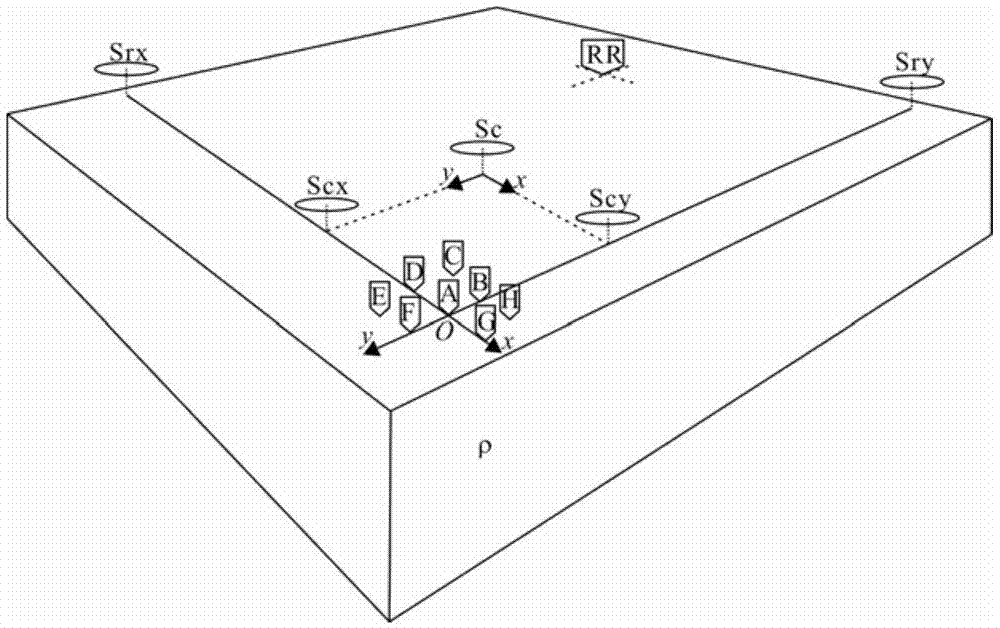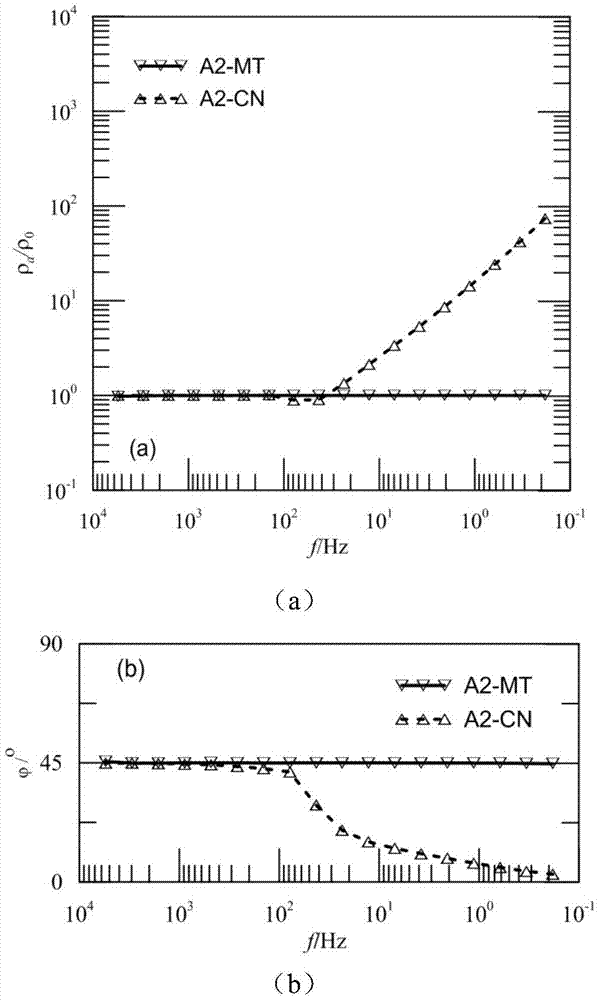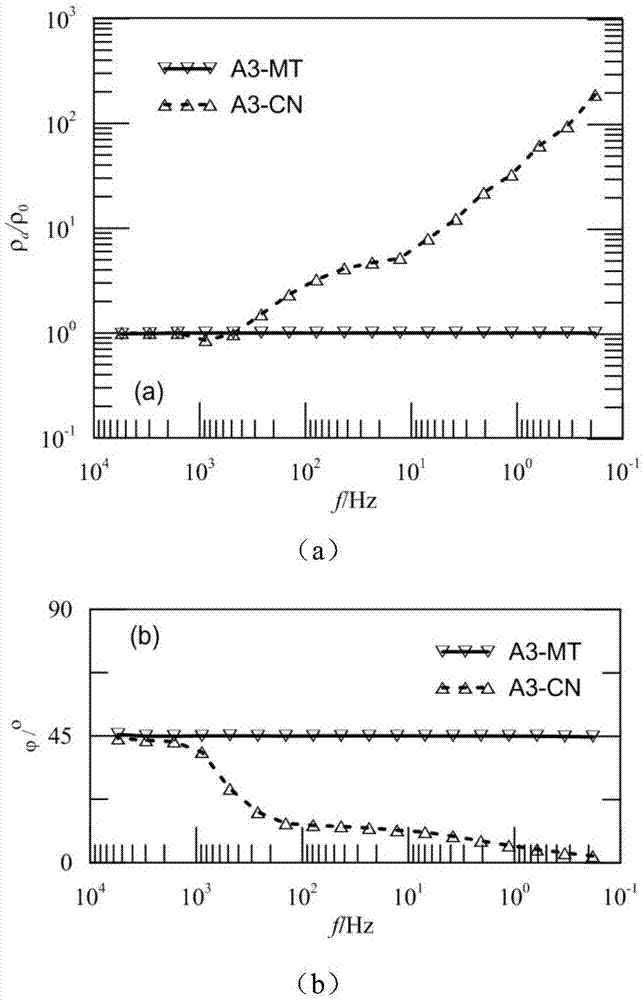Time-space array differential electromagnetic prospecting method
A differential and array technology, applied in the field of electromagnetic detection, can solve the problems of long duration, unsatisfactory processing effect and need to be improved, and achieve the effect of flexible acquisition method
- Summary
- Abstract
- Description
- Claims
- Application Information
AI Technical Summary
Benefits of technology
Problems solved by technology
Method used
Image
Examples
Embodiment Construction
[0178] The present invention will be further described below in conjunction with the accompanying drawings and specific embodiments.
[0179] The space-time array differential electromagnetic prospecting method provided by the present invention includes the following steps:
[0180] (1) Observation design: Determine the observation target and depth range, determine the observation frequency range according to the actual exploration depth requirements and the background conductivity of the survey area, and determine the synchronous observation time length and signal sampling rate of the measurement points according to the required observation frequency; Design survey lines and survey points for detection targets and survey areas; figure 1 As shown, array observation points A, B, ... are deployed in the survey area, and the far reference point RR is arranged in a low-noise area far enough away from the survey area;
[0181] (2) Device layout: use multiple electromagnetic field...
PUM
 Login to View More
Login to View More Abstract
Description
Claims
Application Information
 Login to View More
Login to View More - R&D
- Intellectual Property
- Life Sciences
- Materials
- Tech Scout
- Unparalleled Data Quality
- Higher Quality Content
- 60% Fewer Hallucinations
Browse by: Latest US Patents, China's latest patents, Technical Efficacy Thesaurus, Application Domain, Technology Topic, Popular Technical Reports.
© 2025 PatSnap. All rights reserved.Legal|Privacy policy|Modern Slavery Act Transparency Statement|Sitemap|About US| Contact US: help@patsnap.com



